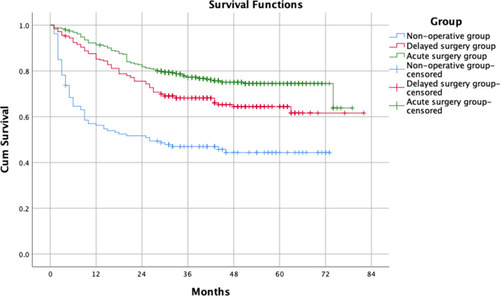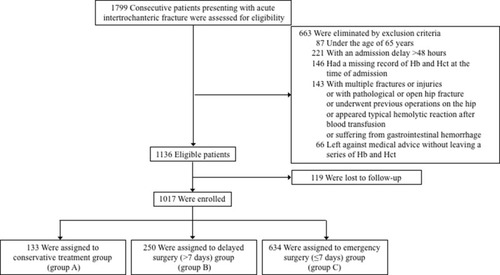Figures & data
Table 1 Demographic and Injury-Related Data of the Study Participants
Table 2 Comorbidities of the Study Participants
Table 3 The Maximum Hidden Blood Loss Calculated During Hospitalization, Perioperative Hemoglobin Values, Operation-Related Data, and Transfusion Data of 1,017 Patients with Intertrochanteric Fracturesa
Table 4 Multiple Linear Regression Analysis of Association Between Risk Factors and the Maximum Hidden Blood Loss Calculated During Hospitalization in 1017 Patients
Figure 2 Kaplan–Meier survival curves for elderly patients with intertrochanteric fractures. The Kaplan–Meier survival curve of patients without surgery was significantly lower than that of surgical patients (p<0.001, log-rank). Within 1 year after injury, patients treated nonoperatively had a risk of death at 1 month that was 3.2-times as high, a risk of death at 3 months that was 6.6-times as high, a risk of death at 6 months that was 8.2-times as high, a risk of death at 9 months that was 5.3-times as high, and a risk of death at 12 months that was 4.2-times as high as the risk compared with the patients who received operations. Higher mortality was also obtained in patients with surgical delay than acute surgery patients (p=0.001, log-rank).


